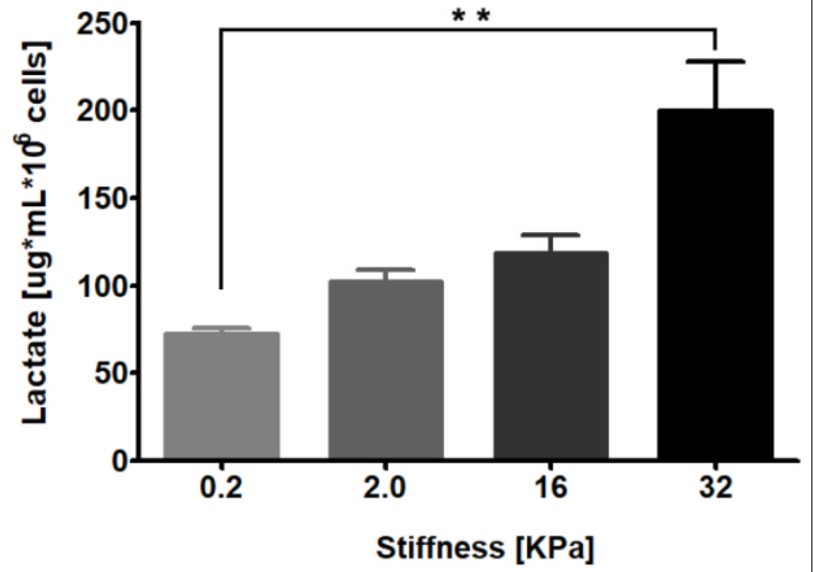Matrix Stiffness Modulates Lactate Production
08/02/21
Publication Title:
Matrix Stiffness Modulates Metabolic Interaction Between Human Stromal and Breast Cancer Cells to Stimulate Epithelial Motility
Advanced BioMatrix Products Used:
CytoSoft® PDMS Soft Substrate Plates
How the products were used:
CytoSoft® Plates (soft substrate 6-well plates with a thin layer of PDMS of a specific stiffness, including 0.2, 0.5, 2, 8, 16, 32 and 64 kPa) were used to recreate the normal soft condition of breast tissue. The cells were then transferred to dishes with elastic moduli of 0.2, 2, 16 and 32 kPa. Lactate production was evaluated after 72 hours.

Article Conclusions:
1. Lactate production by stromal cells responds in a linear manner to matrix stiffness, which suggests that the mechanical signals derived from the matrix constitute a specific stimulus for glucose reprogramming.
2. A rigid microenvironment can favor glucose uptake and incorporate substrate for metabolic reprogramming.
3. Both Glut1 and MCT4 protein expression was stimulated by matrix stiffness. These results allow us to argue that stiffer conditions favor glucose uptake and lactate export.
4. MB-231 cells plated on a 31 kPa matrix incorporate lactate at a higher rate than cells plated on a 4.5 kPa matrix.
Link to the publication:
https://www.ncbi.nlm.nih.gov/pmc/articles/PMC8308000/#!po=19.2308



